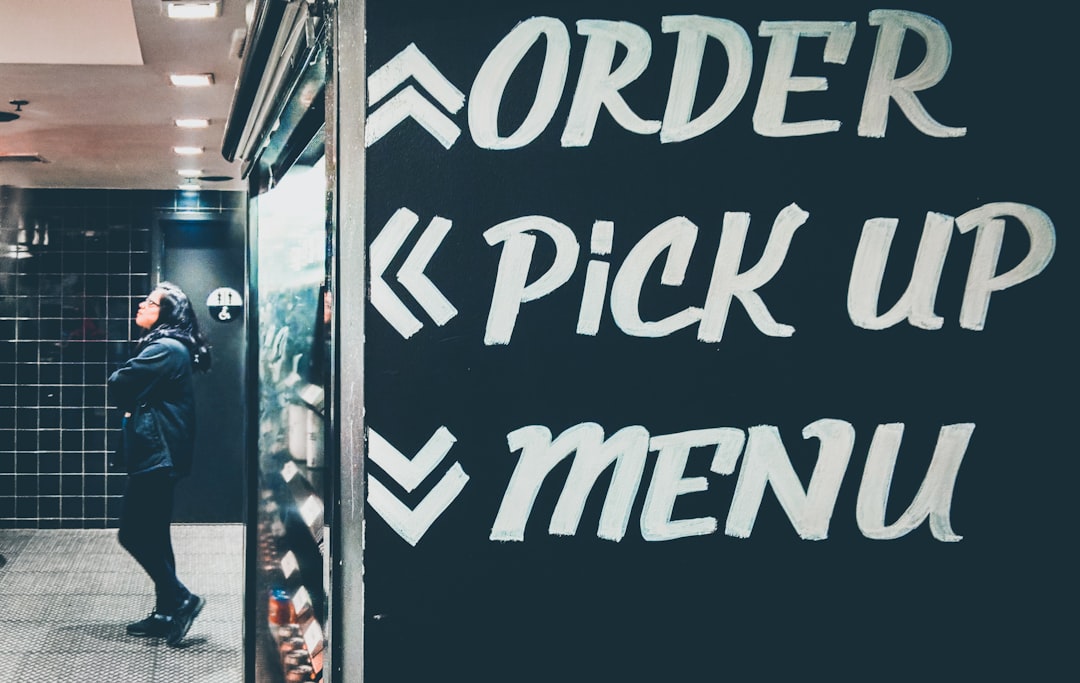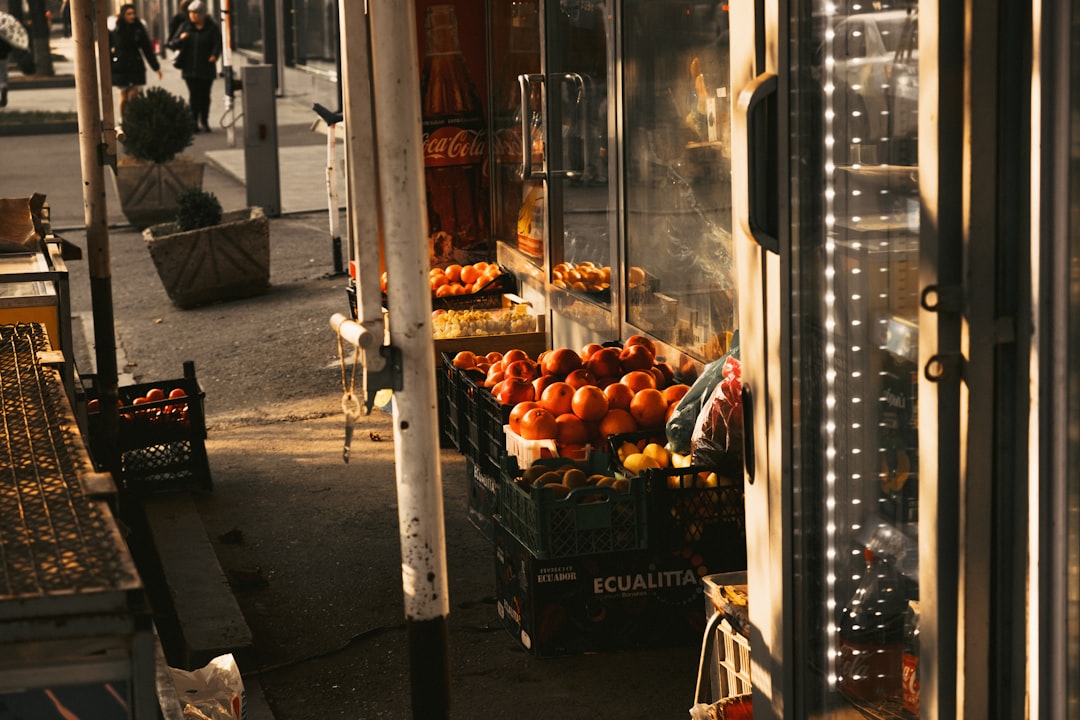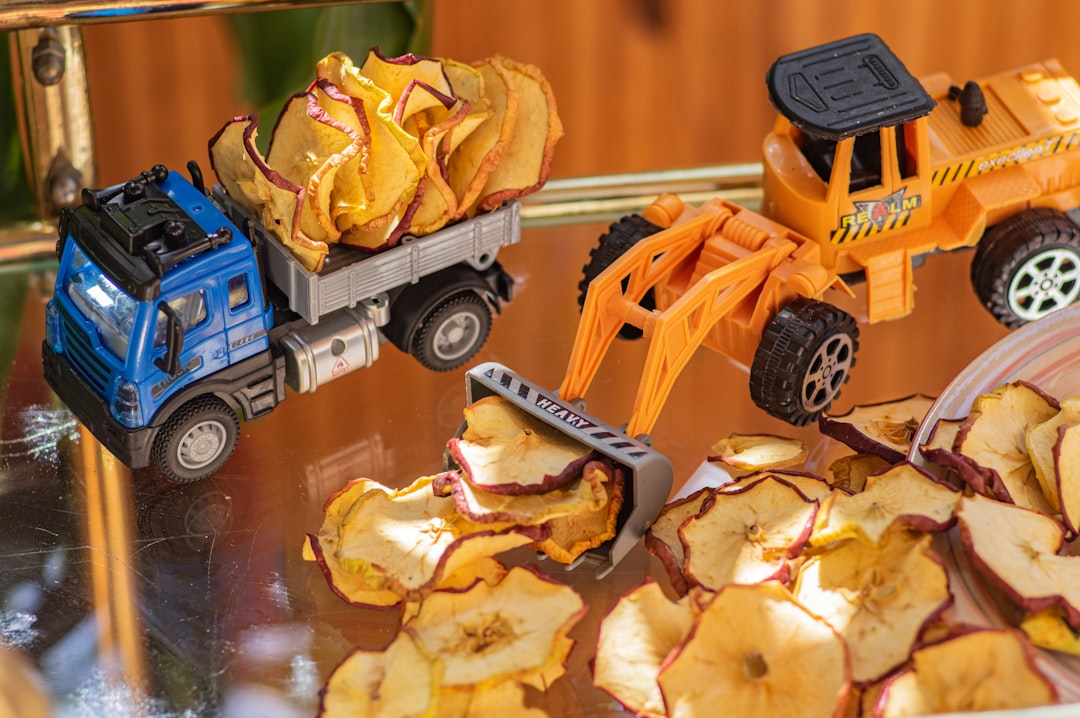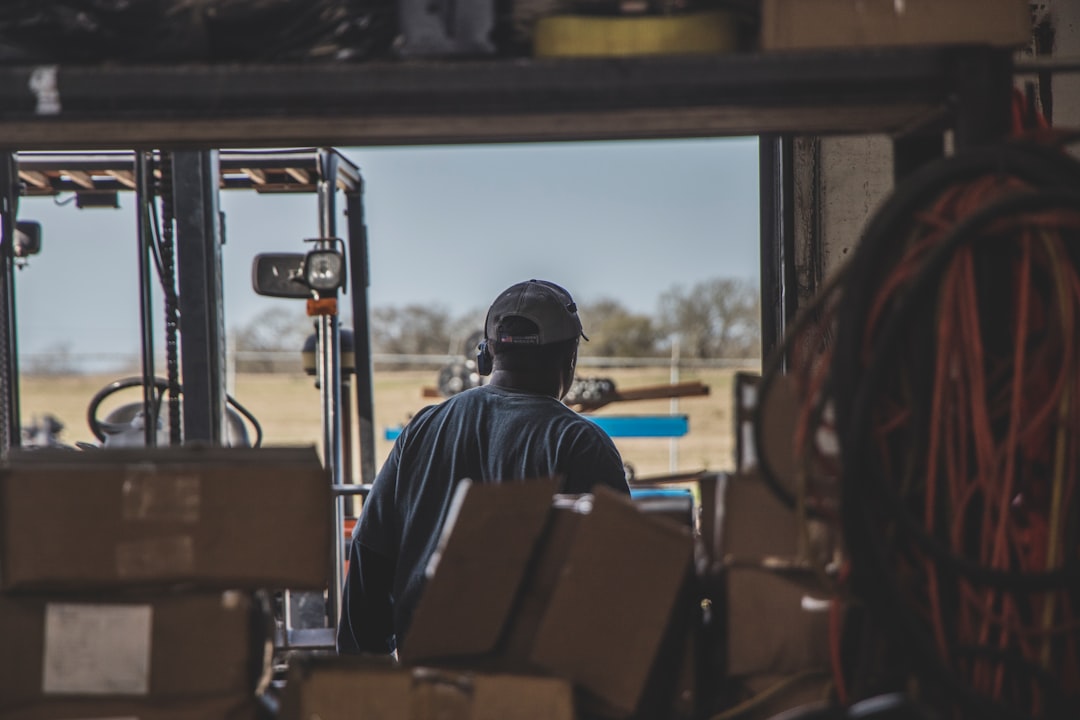

Engage prospects with a scan and streamline customer engagement with FREE QR code marketing tools by Sona – no strings attached!
Create a Free QR CodeFree consultation

No commitment

Engage prospects with a scan and streamline customer engagement with FREE QR code marketing tools by Sona – no strings attached!
Create a Free QR CodeFree consultation

No commitment
In today’s digitally driven world, QR codes have evolved from a novelty to a strategic powerhouse in bridging offline engagement with online action. For food truck manufacturing businesses, QR codes represent a frictionless and highly effective way to boost customer engagement, streamline lead generation, and deliver information right at the moment of intent without requiring app downloads or complex setups. These codes transform every surface into a smart, interactive touchpoint that shortens the distance between curiosity and conversion.
The food truck manufacturing sector is navigating intensifying competition, and many manufacturers still struggle with missed opportunities and outdated lead capture methods. Prospects often engage with brochures or event displays without leaving a trace, which makes it difficult to identify high-value leads or follow up efficiently. QR codes counter these challenges by making specs, custom design portfolios, service options, compliance documentation, and sustainability credentials instantly accessible at every touchpoint, while recording the engagement signal behind each interaction.
By integrating QR codes into marketing materials, onsite assets, and mobile outreach campaigns, manufacturers can deliver a next-level customer journey. QR codes turn analog brochures, paper forms, and static signage into interactive, trackable, and data-driven entry points. This addresses the common frustration of losing track of anonymous but interested prospects and provides a foundation for more personalized, timely engagement. It also ensures that when interest peaks, your team captures that intent and routes it to the right follow-up with minimal friction.

QR codes bridge the gap between physical touchpoints and digital outcomes, making it much easier to address persistent issues like missing high-value prospects and slow response times. Both challenges can translate into delayed deals or lost revenue. A thoughtful QR strategy elevates print and in-person interactions into measurable, immediate actions that your sales and marketing teams can capitalize on.
To do this well, treat each QR placement like a mini conversion point. Define what you want a scanner to do, show exactly why it is valuable to scan, and make the destination mobile-first. Pair that with tracking, alerts, and workflows so your team can meet prospects where they are with content, quotes, and answers. Sona QR can support each step, from code creation and design to analytics, CRM sync, and revenue attribution.
By replacing analog workflows such as printed price sheets, paper contact forms, and static decals with dynamic QR solutions, food truck manufacturers simplify the buyer journey across discovery, consideration, and decision. Advanced tools like Sona QR automate lead capture and route timely, personalized follow-ups, which allows your team to respond before competitors even get on the radar.

Food truck manufacturing is rapidly digitizing, yet many companies still grapple with incomplete prospect data and little visibility into who interacts with their brand. Buyers expect instant access to detailed information, while manufacturers need a scalable way to capture and act on in-person interest. QR codes solve both needs with a low-cost, high-impact approach that turns every asset into a data source and every moment into an opportunity.
When designed and deployed correctly, QR codes reduce friction for prospects while increasing precision for your sales and marketing teams. That combination increases lead volume and quality at the same time. In a market where purchase decisions often require technical review, customization planning, and regulatory alignment, the ability to deliver exactly what a buyer needs, right now, can be decisive.
The ability to surface previously anonymous interest, enrich customer profiles, and unlock real-time engagement means QR codes are not just convenient for buyers. They are a practical strategy for closing some of food truck manufacturing’s costliest pipeline blind spots and accelerating buying decisions.

Food truck manufacturers field diverse requests: equipment configurations, safety and compliance standards, service scheduling, and warranty support. QR codes can flex to meet these needs with formats that align with specific actions you want a scanner to take. The right format reduces friction and encourages completion at the moment of interest.
Choosing between static and dynamic codes matters. Static codes are best for evergreen items like owner manuals or general information pages. Dynamic codes are best for anything that requires updates, tracking, segmentation, or experimentation because you can change the destination without changing the code.
With Sona QR, manufacturers can generate these formats, manage destinations, update content as needs change, and monitor performance in one place. Dynamic management is particularly useful for rotating offers, compliance updates, and location-specific content.

Food truck manufacturers invest in high-visibility assets such as trade show booths, demo vehicles, printed guides, and outdoor advertising. Yet these touchpoints are often disconnected from the sales funnel. QR codes make every physical interaction both measurable and actionable, which converts awareness into qualified interest.
Focus first on the places where buyers naturally engage with your brand and your trucks. Then make it obvious why scanning benefits them. Clarity in your call to action matters. A message like “Scan to see this build’s full spec and price options” outperforms generic prompts and helps move buyers forward.
These placements align QR-driven interactions with moments of real intent. They reduce missed opportunities caused by slow handoffs or untrackable assets and help build an attribution model that captures the value of your offline presence.

Across the build and purchase cycle, QR codes address pain points like late capture of lead details, missed high-value accounts, and costly manual follow-ups. By mapping specific codes to key actions, you can see what prospects want and respond with the right content or people at the right time.
Below are three high-impact use cases that align with common buyer behaviors in food truck manufacturing. Each is designed to increase engagement, shorten sales cycles, and provide cleaner attribution across your marketing mix.
Each use case converts static interest into measurable action. Together, they help you move from broad marketing to targeted outreach that reflects what each buyer actually explored or requested.
Every scan is a signal. It captures context like location, time, and device, along with behavioral intent such as exploring design options, checking compliance, or investigating pricing. With multiple codes mapped to different touchpoints, you can segment your audience automatically and feed that intelligence into retargeting and nurture programs.
This approach transforms QR codes from simple links into a disciplined segmentation engine. It separates casual browsers from serious buyers, and it makes remarketing more relevant because it is based on real, recent behavior. Sona QR can sync these segments to your CRM and ad platforms so you can act on them in near real time.
For food truck manufacturing, useful audience distinctions include first-time entrepreneurs vs restaurant brands expanding into mobile service, single-truck buyers vs fleet managers, and pre-purchase researchers vs current owners seeking upgrades. Aligning content and sales motions to these differences drives higher conversion at lower cost.
QR codes are more than convenient links. They are connective tissue that unifies offline and online marketing, making each channel more accountable and each interaction easier to measure. When your print, event, and out-of-home investments all feed into the same data pipeline, you get a clearer picture of what drives pipeline growth.
In food truck manufacturing, buyers collect information over time and across channels. A scanner might first see a demo vehicle at a festival, later scan a catalog at home, then request a quote from a trade show. QR codes create continuity between these touchpoints and ensure that data from each step enriches the buyer record.
QR codes serve as the offline onramp to your digital marketing engine. With a centralized platform like Sona QR, you can manage all codes, monitor performance across channels, and sync scan data with CRM and ad platforms to enrich attribution and accelerate deal cycles.
A disciplined process ensures that your QR code campaigns produce measurable outcomes rather than isolated experiments. Start with a single high-impact use case, validate your assumptions with tracking, then scale the approach to new placements and assets. This checklist can be reused for each campaign and each event to ensure consistency and improvement over time.
As you work through these steps, align your stakeholders. Sales, marketing, and operations should agree on the goal of each code, the content strategy, and the follow-up process. That alignment ensures that scans receive fast, helpful responses and that the data generated informs smarter decisions across teams.
Identify the persistent hurdles you want to solve, such as anonymous booth visitors at trade shows or prospects who browse demo trucks but never fill out a form. Define the business outcome you want, for example, more quote requests, faster compliance confirmations, or increased financing prequalification.
Select between static and dynamic codes based on the need for updates, tracking, and segmentation. Static codes fit fixed destinations like evergreen manuals, while dynamic codes support agile campaigns that require ongoing iteration and real-time analytics.
Design for scannability with high contrast, adequate size, and quiet space around the code. Add your logo or brand elements to signal trust and align with your visual identity. Include a clear, benefit-driven CTA next to the code.
Roll out the code across placements that align with your growth plan: truck wraps for passive interest capture, expo banners for real-time lead handoff, catalogs for at-home consideration, and in-vehicle decals for post-sale support.
Monitor scans, conversions, and audience segmentation. Track which messages, designs, and placements drive high-value actions. Use these insights to inform creative changes, A/B test landing pages, and shift budget to your best performers.
Many manufacturing teams struggle to connect offline marketing to revenue. QR codes, paired with robust analytics, close this gap by capturing meaningful data at each physical interaction. The result is a measurable view of how brochures, banners, and demo trucks contribute to pipeline, not just to impressions.
A strong analytics setup turns scans into a narrative that explains who engaged, what they viewed, and how that engagement led to pipeline and revenue. It exposes underperforming materials, validates the top-performing placements, and gives you the confidence to iterate quickly.
With this level of visibility, every printed asset becomes a measurable growth lever. Instead of guessing which tactics work, you can prove ROI, redeploy budget to high-performance placements, and tighten the feedback loop between marketing activity and revenue outcomes.
Once your first campaigns are running, scale what works and refine what does not. Treat QR codes like an evolving channel that benefits from ongoing testing and education. Small improvements in design, placement, or follow-up timing can compound quickly across events and assets.
The most successful teams make scanning obvious and valuable. They coach staff to mention the benefits of scanning and they use automation to act on the data immediately. This keeps the buyer experience smooth and ensures no warm lead sits idle.
Creative placements reinforce brand and utility. For example, put a QR code on eco-certification badges that links to sustainability specs, or on service stickers that open maintenance logs. These touches highlight innovation while making information accessible at the exact moment it is needed.
QR codes have rapidly become more than just a link. They are foundational to digital transformation in food truck manufacturing because they unify physical and digital experiences, reveal buyer intent, and turn every interaction into a chance to move the deal forward. When your brochures, demo trucks, and event signage all connect to trackable, dynamic destinations, you eliminate anonymous engagement and capture demand at the source.
Here is what a mature QR strategy delivers for manufacturers:
The differentiators for the next generation of food truck manufacturers are not only in vehicle design but also in how seamlessly they unify in-person interactions with digital journeys. With Sona QR for code management and analytics, and Sona.com for identity resolution and multi-touch attribution, you can manage every code in one place, sync insights to your systems, and tie scans to revenue. Start creating QR codes for free: https://www.sqr.me/register
QR codes have transformed food truck manufacturing from a traditional, product-focused process into a dynamic, customer-centric engagement platform. Whether it’s streamlining client onboarding, enhancing product customization experiences, or enabling real-time feedback, QR codes replace manual follow-ups with instant, mobile-friendly interactions that capture valuable data and turn every touchpoint into a growth opportunity.
Imagine knowing exactly which design specs or marketing materials spark the most interest—and being able to optimize your campaigns instantly without costly reprints. With Sona QR, you can create dynamic, trackable QR codes in seconds, update campaigns on the fly, and directly link every scan to sales outcomes and customer satisfaction metrics. No missed leads, no wasted effort—just smarter, more profitable food truck manufacturing strategies.
Start for free with Sona QR today and turn every scan into a new partnership, a satisfied customer, or your next big order.
The key steps include choosing a high-impact use case, selecting static or dynamic QR codes based on content needs, designing and testing for scannability, deploying codes at relevant touchpoints, and tracking performance to optimize results.
QR codes transform offline materials into interactive, trackable touchpoints that capture prospect information instantly, enable personalized follow-ups, and reduce manual lead capture errors.
Useful formats include web links to spec sheets or galleries, vCards for contact sharing, SMS or email actions for quick requests, Wi-Fi access for on-site connectivity, and app download links for digital tools.
Effective placements include trade show booths, demo vehicle exteriors and interiors, brochures, point-of-sale materials, vehicle wraps, direct mail, and packaging or decals on finished trucks.
Manufacturers can create unique QR codes for each buyer journey stage, tag scans by content or use case, segment by location and timing, and sync scan data with CRM and ad platforms for targeted nurture and remarketing.
Dynamic QR codes allow content updates without reprinting, enable tracking and analytics, support A/B testing, and facilitate segmentation and personalized messaging.
QR codes capture scan data with location, time, and device info, attribute engagement to specific assets, trigger real-time responses, sync with CRM systems, and link interactions to pipeline and sales outcomes.
Features include high contrast, adequate size, quiet space around the code, brand logos for trust, and a clear call to action that explains the benefit of scanning.
QR codes streamline lead capture, enable instant access to specs and compliance info, automate follow-ups, support dynamic content delivery, and integrate data into CRM and marketing platforms for smarter decision-making.
A clear call to action guides prospects on what to expect, increases scan rates by explaining the immediate benefit, and helps convert anonymous interest into qualified leads.
Use Sona QR's trackable codes to improve customer acquisition and engagement today.
Create Your FREE Trackable QR Code in SecondsJoin results-focused teams combining Sona Platform automation with advanced Google Ads strategies to scale lead generation

Connect your existing CRM

Free Account Enrichment

No setup fees
No commitment required

Free consultation

Get a custom Google Ads roadmap for your business






Launch campaigns that generate qualified leads in 30 days or less.
